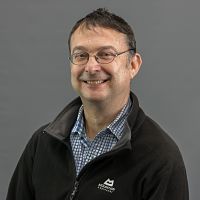Electrical Energy Management Group Facilities
Get in touch
energy-management@bristol.ac.uk or contact individual EEMG Academics directly for specific research enquiries
The Group’s facilities include: joint design and manufacturing of machines, drives, and power electronic converters; high-fidelity AC/AC power conversion equipment for the optimisation of drive efficiency; 200 kVA and 1 MVA dynamic testing and hardware-in-the-loop simulation; a large pool of high-end test equipment; and advanced design and validation software. Our well-equipped laboratories include high-power test cells, state-of-the-art measurement capabilities for advanced power electronics, and rapid manufacturing facilities.
The Energy Management Group has offices in Merchant Venturers Building and in Queen's Building. The laboratories are situated in Queen's Building and are where most of the group's practical research is carried out. The laboratories also provide research space for students carrying out their final-year projects. More information about the group can be found in our EEMG Brochure (PDF, 3,990kB).

Facilities
- Joint design and manufacturing of machines, drives, and other types of power electronic converters.
- High-fidelity AC/AC power conversion equipment for the optimisation of drive efficiency, this is equally applicable to networks.
- 200 kVA and 1 MVA dynamic testing, and hardware-in-the-loop simulation.
- Large pool of measurement equipment with torque transducers, high-bandwidth (GHz+) oscilloscopes, impedance analysers, source meters, specialist probes, real-time control and measurement systems etc.
- Simulation tools and validation techniques spanning systems and sub-components.
- Environmental chambers, and a high precision calorimeter for the evaluation of losses in power electronics.
- Access to main Engineering Workshop in the same building, with precision machining, wire eroding, laser cutting, PCB manufacture etc.
- Access to other laboratories in the same building, e.g. composite fibre, hydraulics, and aerodynamics laboratories.
Our aim is to make the journey from electrical generation to usage more effective. We investigate advanced energy conversion for low-carbon electrical systems that require optimised efficiency, and high power or energy density. We demonstrate practical systems from microwatts to megawatts, with applications ranging from Health, to Vehicles, Renewable Energy, and Aerospace.
